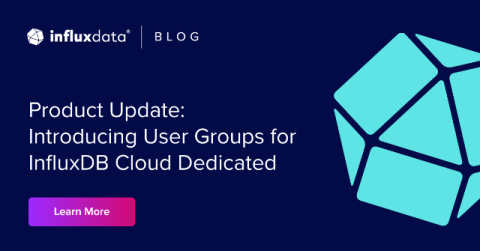Product Update: Introducing User Groups for InfluxDB Cloud Dedicated
We are excited to announce the launch of User Groups, a major update that facilitates enhanced security through access control in InfluxDB Cloud Dedicated. This new feature allows for more granular access management by limiting limited access accounts. Giving customers more access control helps them implement PoLP (“Principle of Least Privilege”) for improved security.











